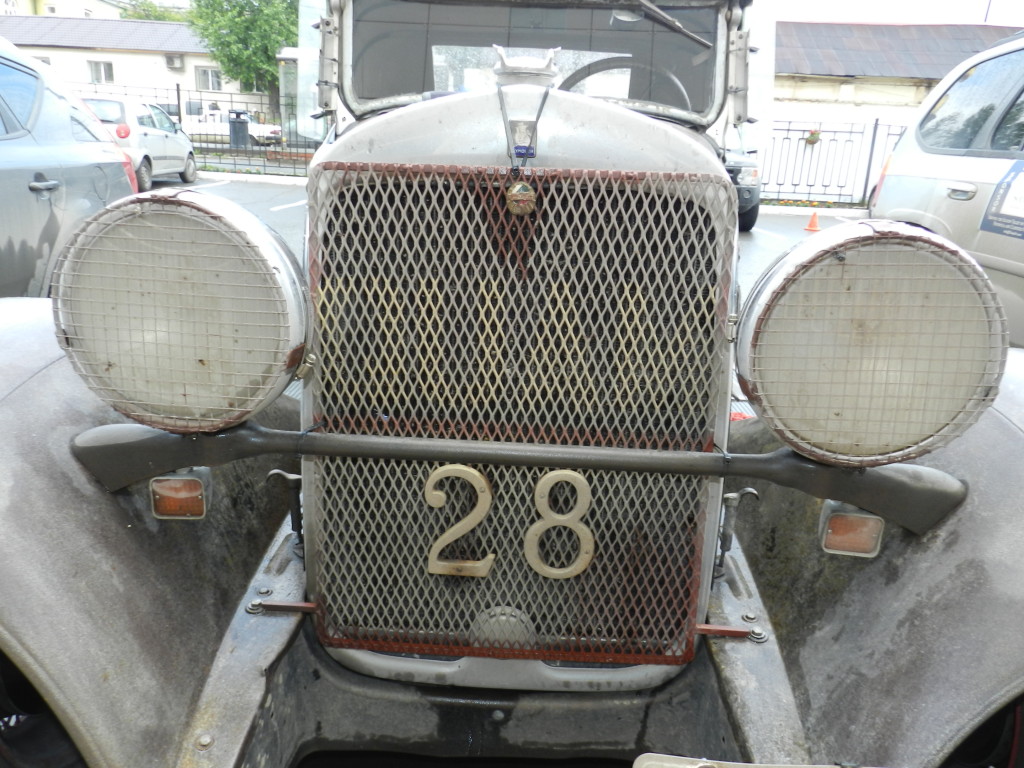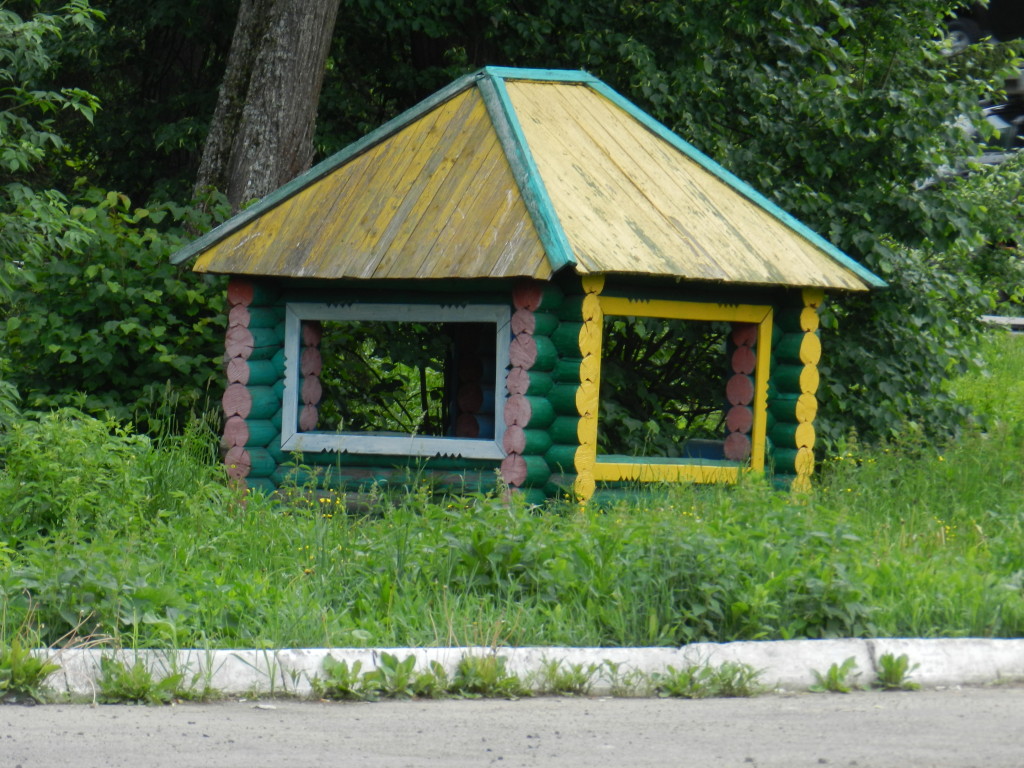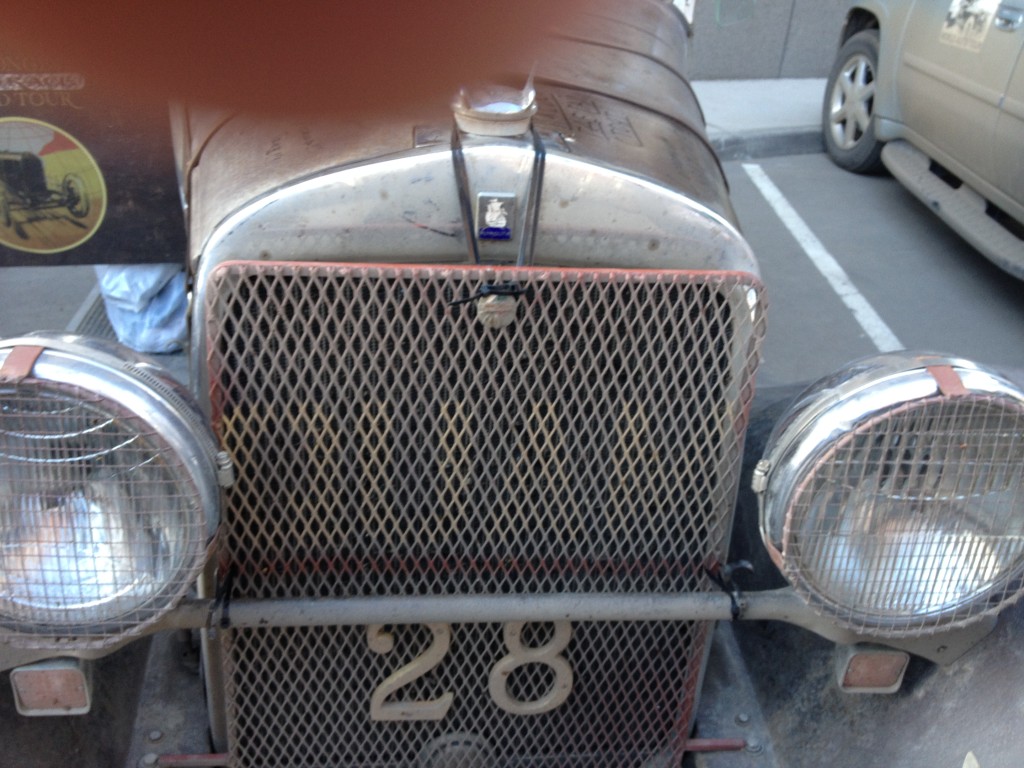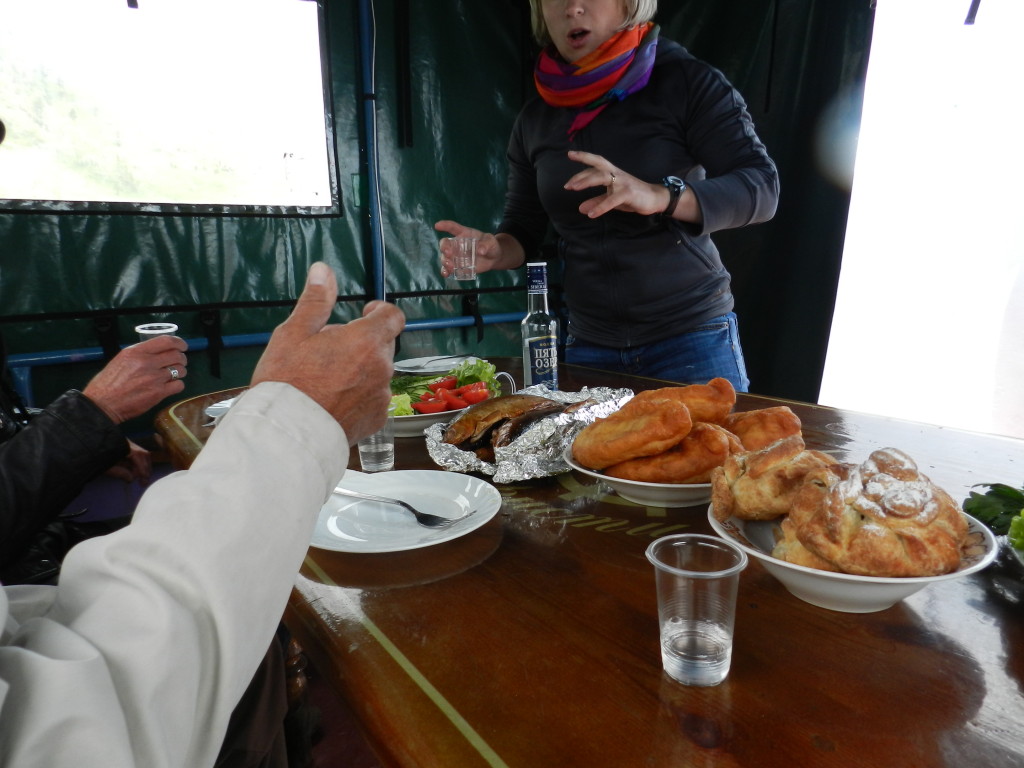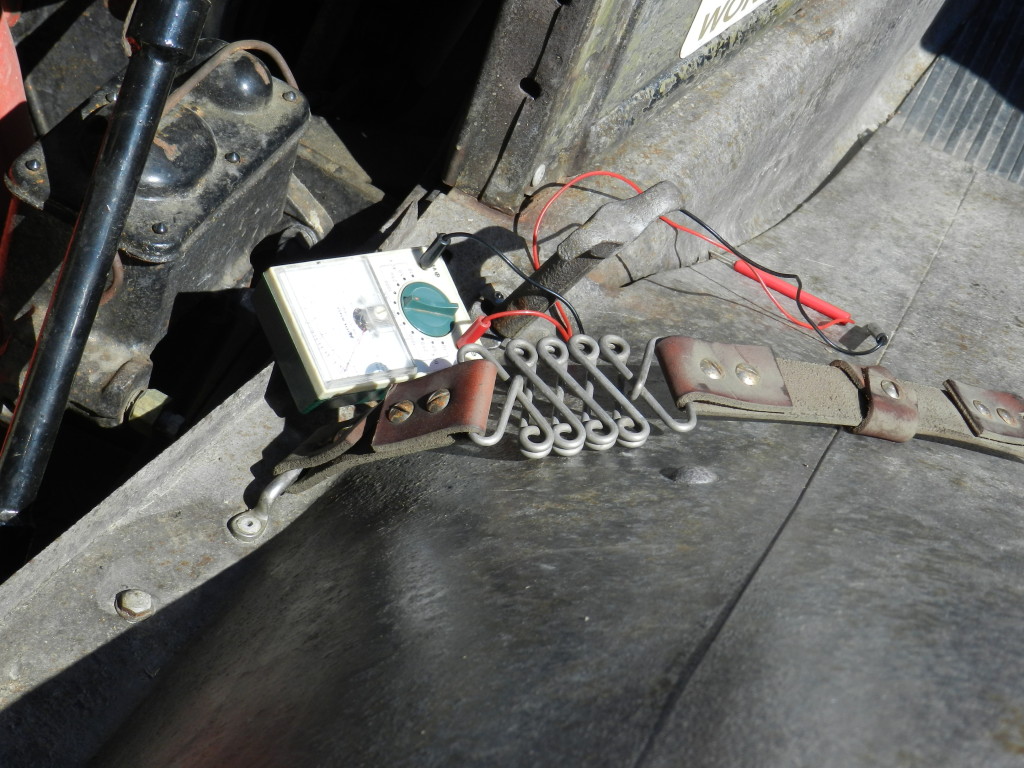Number of tie wraps: 29 (5 since last blog post)
Countdown: 5726 miles down, 2859 to go
Quote of the day: “Welcome to Russia!” (Izhevsk policeman to Luke and John yesterday)
In 1908, George Schuster and the Thomas Flyer had a much tougher time getting from Perm to Kazan than we did. The Flyer had stripped two gears just outside Omsk, quite a ways back, but a field repair kept them going until just outside of Perm, where the transmission gave up altogether as Schuster tried to extricate the Thomas from a gigantic pothole.
Schuster had ordered a spare transmission be shipped to Russia from the U.S. while he was in Harbin, China, because he was worried about the transmission even then. The transmission had arrived in Russia within two weeks, but no one seemed to know at which train station it had been off-loaded. Fortunately, just when the Thomas really needed the new transmission, it was located in Kazan, several hundred miles from the breakdown point, so Schuster took a wagon to retrieve it.
After repairing the Flyer, the U.S. team took a wrong turn and wound up in Viatka (modern day Kirov) several hundred kilometers out of their way before finally arriving in Kazan. Between the repair and getting lost, they were once again well behind the German Protos. The New York Times reported much confusion on the whereabouts and intentions of the U.S. team during their side trip to Viatka — click here for one article written during this period.
We had a little time in Perm yesterday morning while John and Natalia went to immigration one more time to try unsuccessfully to resolve John’s visa. Luke and I walked down a path that paralleled the Kama River and the Siberian Railway and we found a scary-looking but perfectly safe underpass that we took underneath the railway to a footpath right by the river.
Later that day, we crossed the Kama River on the bridge below as we drove out of Perm. Schuster and the Flyer crossed the Kama by ferry, since there was no bridge available in 1908.
Before we left Perm, Luke washed the headlights on the Roadster and removed a rather large deceased insect from the headlight grills (those of you who are Air Force fighter pilots will know why I used the term “deceased insect” — I don’t want any of you getting hurt from hurling your body to the floor).
On the drive to Izhevsk yesterday and to Kazan today, we saw many brightly painted roadside shelters for picnic tables, such as the one below. They seemed to come in all shapes and colors, and were located along the road every kilometer or so.
As we were heading to the hotel in Izhevsk, the police waved the Roadster over for a look. They were mostly just curious about the car and the paperwork, and one of them came over to the hotel later and signed the car.
Today, we had great roads most of the way from Izhevsk to Kazan, so we made good time. During our final gas stop, the young man in the picture below admired the car and I couldn’t get the Bluetooth on my iPhone to send the picture to his phone, so I told him I’d post the picture on the website instead.
John also added another tie wrap to the turn signal flasher unit at the gas stop.
As we neared Kazan, many of the road signs became tri-lingual — Tatar, the native language here, as well as Russian and English.
Kazan is a beautiful city with a blend of modern structures and traditional architecture. We’ll be taking a tour of the city tomorrow morning, so I’ll post some pictures then.
After we arrived at the hotel, John decided to double-up the tie wraps on the radiator grill, so that added four more tie wraps to the total.
Tomorrow, after our city tour, we head to Nizhny Novgorod, 395 km. We’ll be arriving in Moscow on Sunday now so we have an extra day to sort out John’s visa.



